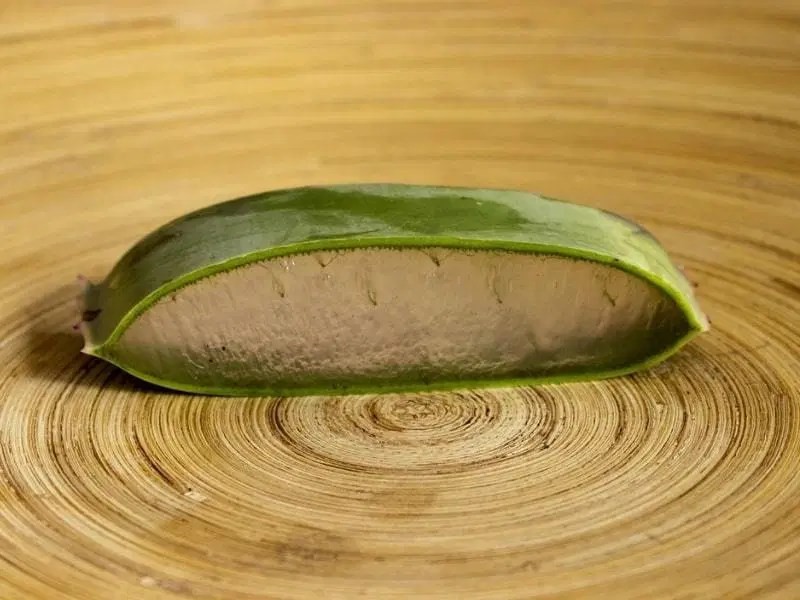
𝒜𝓁𝑜𝑒 𝒱𝑒𝓇𝒶 𝐹𝒶𝒷𝓇𝒾𝒸
Banana, pineapple, bamboo, aloe vera… No, this post is not about agricultural products. It’s about fashion, fabrics and what’s coming!🍌🍍🎍
Have you heard about Aloe Vera fabric, or its “formal” name, ORGANIC PLANT-BASED CELLULOSIC ALOE VERA FIBER?
Aloe Vera is basically a native plant of Africa. It’s also known as lily of the desert and plant of immortality due to its medicinal effects. This plant has 96 percent of water content. The leaf of this plant contains over 75 nutrients and 200 active compounds such as 20 minerals, 18 amino acids, and 12 vitamins.
Since historic times its versatile uses were recognized. Starting from Cleopatra’s skincare efforts to Alexander's medical treatment to heal his wounded soldiers.
But now there’s more to it. Today, more and more people are consciously making efforts to veer away from environmentally unfriendly clothes.
And that’s the reason why fabrics such as aloe vera, made from plants and fruits are the latest trend 🙌
SOME PROPERTIES OF THE ALOE VERA FIBER
🍃 It’s biodegradable. Its physical and chemical properties are both similar to cotton.
🍃 It’s recyclable.
🍃 It offers excellent breathability and moisture management.
🍃 It’s nourishing for the skin. Relieves pain, such as muscles, joints, etc.
🍃 Aloe Vera acts as a natural purifier, as an anesthetic.
🍃 It acts as a natural humidifier that adds moisture to all layers of human skin, enhances normal cell proliferation, thus speeding up the regenerative phase of the healing process.
🍃 It is bactericidal when applied in high concentrations for several hours in direct contact with the bacteria. The fabric can be disposed of viruses and is fungicidal under the same conditions as above.
🍃 Its anti-pruritic reduces bleeding, clotting temperature inflamed body parts.
🍃 It is anti-inflammatory.
ALOE VERA IN TEXTILE FABRICS
Microencapsulation technology helps to add aloe vera in the fabrics creating endless possibilities in the textile segment. Aloe Vera content is embedded into airtight and waterproof microcapsules. These microcapsules are miniature containers, manufactured with a protective polymeric coating or melamine shell. These shells are able to protect its contents from evaporation, and contamination until it is released. The capsules are bonded with the fibers during the process when the fabric is manufactured. The capsules open when the fabric is touched or rubbed. When the garment is tailored, these capsules remain as a part of the clothing. When the garment is worn, the aloe vera in the garment is applied on the skin on a regular basis. This tolerates a temperature of 130C.
Also, The fabric is produced by innovative technology and is made of microfibers. Microfibers are half the diameter than the silk fiber, for an idea: A human hair is ten times stronger than microfiber. By its nature, the very fabric reminds natural silk. Extra gentle formula provides extra fabric to feel pleasant to the touch, is a lightweight, highly absorbent and thick and crease-resistant. The fabric repels moisture and cold from the outside, a large number of pores allow easy evaporation of sweat. The fabric cools during the warm nights, and if you are cold on the contrary it warms. It features excellent antibacterial and anti-allergenic properties. Microfiber fabric ALOE VERA Fabric is equipped with the final finish, which delivers exceptional fabric properties.
This type of fabric is mainly used in manufacturing inner garments, as they are next to the skin. Apart from keeping the body warm; it also has some additional functions like absorbing bad smell, and providing anti-bacterial features. They are used in the manufacture of undergarments, stockings, etc. This will be more beneficial for the making of infant wear. Mothers can now protect their infants against chaffing by putting aloe vera enriched clothes.
SUSTAINABILITY
🍃 Creating less wastage in the environment.
🍃 The fibers are made from the skin of the plant, which is thrown away after the inside gel has been used.
References:
Importance of aloe vera in the textile and cosmetics industry
ORGANIC PLANT-BASED CELLULOSIC ALOE VERA FIBER!